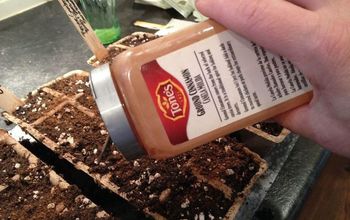What kind of flower am I

Related Discussions
GNATS - How to get rid of them?
Somehow my house and garden got tiny gnats that killed my fuchsia plant and fly everywhere. I have tried ALL the Web recommendations - soap and oil dishes, sand in th... See more
Marigolds growing! Should I pinch the buds?
My marigold plants are growing. I heard that pinching the buds until Autumn will allow them to grow without killing the plant. Is this true?
Growing garlic
Growing our first garlic, should we wait until the leaves are drying out before we pick it? Husband picked first one today along with our first potatoes.
How to keep mice out of your garden?
Hi everyone, I have mice in my garden destroying my vegetables and I have also noticed them in the barn and shed. Please can someone tell me how to prevent them from ... See more
What's the best flower/plant to grow in Texas?
I know that opinions vary, but what's your opinion?!I have great luck w Rosemary plants. Green all year long.




Verbascum is a genus of over 450 species of flowering plants, common name mullein, in the figwort family Scrophulariaceae. They are native to Europe and Asia, with the highest species diversity in the Mediterranean.
Erect stems bearing profuse saucer-shaped flowers that are usually yellow, but also white, brownish-red, or purple. Individual flowers are short lived but numerous, and flowering takes place over a long time. Most plants in the genus Verbascum are biennials or short lived perennials and a few are annuals; some have semi-evergreen or evergreen rosettes. Most species self-sow, but not as a nuisance, and many seedlings vary slightly from the parent cultivar, thereby creating welcome surprises. Most species are found on dry, stony hillsides and open woodlands, but different species are well-adapted to cottage, gravel, rock gardens, or naturalized areas.
Noteworthy Characteristics
Tall, upright flower spikes with small bright flowers bloom over a long period and create vertical accents in the garden. Leaves are often fuzzy and cast with a silvery sheen.
Care
Fuzzy-leaved species prefer full sun, others will tolerate partial shade. Grow in any well-drained soil. Verbascums tend to flop in fertile soil.
Propagation
Sow seeds of annuals and biennials in spring in containers under a cold frame. Divide in spring. Take root cuttings in winter. Take semi-ripe cuttings of shrubby species in late winter.
Problems
Powdery mildew and other fungal leaf spots. Caterpillars.